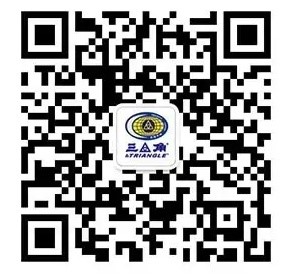
[Maintain normal internal pressure]
Air to tires is just like grains to humans. It can be said that motor vehicles travel “on the air”. Therefore, proper internal pressure is of vital importance to tires.
Excessive or insufficient air pressure would result in deformation, thereby greatly reducing the service life of the tire. Some drivers believe that high air pressure may increase the carrying capacity of the tire and is good for the tire. Actually, that is not the case. Tires with high air pressure, just like patients with hypertension, are prone to problems. First, due to excessively high air pressure, the cord ply is often in tension. At this time, the tire is very vulnerable to damages, just like that an overly inflated balloon is definitely more like to be punctured than a properly inflated balloon. When a tire with excessively high pressure hits the stones or travels over the uneven road surface, the tire would burst due to the instant concentration of stress. Second, excessively high air pressure will result in wear in the center of the tire, thereby shortening the service life of the tire. A tire with insufficient air pressure is just like a malnourished person. At this time, the side of the tire is bulged and closer to the ground, making the tire more prone to damages. Furthermore, due to dramatic deformation and quick temperature rise inside the tire, the crown would be detached. The deflection of the cord would result in temperature rise of the side wall, further resulting in detachment and breakage of cord fabric. More than damages mentioned above, insufficient air pressure would also result in tire shoulder wear and shortening of service life of the tire. In addition, insufficient tire air pressure is also the main cause for "standing waves". Therefore, drivers should not underestimate the air pressure and should always check the air pressure, at least once a month. In addition, please make sure to check the air pressure before long-distance driving. In measuring the tire pressure, the following two points should be highlighted:
First, check the air pressure before driving instead of afterwards. The reason is that the air within the tire will expand due to heat after driving, increasing the air pressure by 10-20%. Therefore, the air pressure measured at this time is not accurate.
Second, hot tires cannot be inflated or deflated immediately. The air temperature of the hot tire is quite high, and the heat inside the tire rises gradually and evenly. If the tire is inflated when the it is hot (with cold air), and the temperature would drop suddenly at a certain position of the tire, which would further damage the performance of the internal structure of the tire. This is just like a hot red iron rod take out from the fire. If you cool one end with cold water and the other let it cool naturally, the proprieties of both ends would definitely different. Deflation of the hot tire would damage the properties of the tire due to factors such as sudden contraction. Therefore, do not inflate or deflate when the tire is hot.
The expressions of air pressure on different tires are different, with units mainly include kgf/cm2, 1bf/in, kPa, bar, etc.
[Regularly interchange the installation positions of tires]
This aims to make each tire wear evenly for the purpose of prolonging the service life of the tire.
The wear conditions of the tire is directly related to its installation position. In general, the shoulder wears faster than the heart of the front tire. The front wheels are often turned to change the driving directions of the automobile. Therefore, the tire shoulders are more likely to wear. However, the wear of the heart is greater than the shoulder for the rear tire. In addition, the front wheel tires wear almost twice as much as the rear tires. The wear of rear wheels RWD vehicles is also quite faster than that of FWD.
To alleviate irregular and uneven wear, so that the tire may wear evenly, and the service life of the tire is prolonged, the optimal way is to interchange the installation positions of the tires. Therefore, experts suggest that the installation positions of the tires should be interchanged every 5,000-10,000 km. The interchanging of tire installation positions is limited by the tire patterns and drive types.
[Load according to specified load capacity]
As mentioned before, each tire has its maximum load capacity. This load index is set by the tire manufacturer in strict accordance with related regulations. Therefore, when using a tire, first understand the maximum load capacity of the tire, and then use the tire in strict accordance with the specified load capacity. Once the tire is overloaded, the same damage will occur as the case of insufficient air pressure.
[Keep the load of each tire basically the same]
When loading the goods, all tires of the vehicle should be subjected to uniform load. Otherwise, the tires would be unevenly worn, and the tires bearing relatively great loads would wear more quickly, thereby shortening the service life of the tire. Do not use rusted, deformed or welded steel rings. Deformed or welded steel rings would cause dynamic balance to be disrupted, posing additional loads of the tires and resulting in abnormal crown wear and early breakage of the cord.
[Avoid sudden acceleration, emergency braking and sudden steering]
Repeated abnormal driving such as rapid acceleration and emergency braking would cause uneven wear of the tire crown, thereby shortening the service life of the tire. Meanwhile, it is also the main cause of tire stripping, longitudinal groove tearing and tire bursting. If the turning speed is too fast, this would result in dramatic deformation of the tire as well as increased internal temperature and fatigue of the cord. This would make the tire in a dangerous state that is prone to bursting, and it may also slip and cause a traffic accident.
[Other precautions]
Furthermore, the following points should be ensured:
(1) In the replacement of the tire, if the bead is not in place, the inflation pressure should not exceed 40psi; and if the bead is fully in place, the inflation pressure should not exceed the maximum air pressure marked on the side of the tire.
(2) When installing a tire with blank holder, the bead should face the wall or a direction with no persons.
ould not exceed the maximum air pressure marked on the side of the tire.
(3) Do not install tires of different specifications and structures on the shaft.
nt--> ould not exceed the maximum air pressure marked on the side of the tire.
(4) Remove the rubble and other objects stuck on the tire surface in a timely manner to avoid tread damages.
uld not exceed the maximum air pressure marked on the side of the tire.
(5) Select the valve matching the tire and rim, and keep the valve cap always covered to prevent the ingress of sediment. General principles of inflating valve use: New tires must be equipped with new valves, of which rubber valves should be used for iron wheels and tires of S-Class and H-Class, and metal valves should be used for alloy wheels and tires of VR-Class and ZR-Class.
(6) Understand the repairable areas of the tire, and repair the tire immediately if a problem is found on the tire. Once the area to be repaired exceeds the repairable area of the tire, it should be abandoned and replaced with a new tire.
(7) Importance should be attached to wear marks. The tire pattern depth is recommended to be kept above 3.2mm (the value may be slightly lower for passenger cars but should not be lower than 2.4mm in no case). This point should especially be highlighted by drivers often driving on expressways.
R-Class and ZR-Class.
(8) To prevent uneven wear of the tire, the positioning of the front wheel should be checked frequently.
ld not be lower than 2.4mm in no case). This point should especially be highlighted by drivers often driving on expressways.
(9) Generally, the tire pressure may be controlled a little lower in summers and higher in winters. In actual practices, it may be adjusted according to the load of the vehicle.
ighlighted by drivers often driving on expressways.
(10) When driving in the height of summer, the number of stops may be increased to check the tires and understand the changes of the tire temperature. If the tire is found hot, stop and park in the shade on the roadside, which may not only cool down the tire but also reduce the fatigue of the tire.
ss and ZR-Class.To check the temperature of the tire, touch the carcass directly with the back of the hand. If the carcass is hot, according to experience, the external temperature of the carcass has reached about 65'C. And at this time, the internal temperature of the tire is close to the critical temperature. The vehicle should be stopped, otherwise the tire will burst. If the back of the hand does not feel hot, it means that the tire has normal working temperature and the driving may be continued.
[Precautions in driving]
I. First, start the vehicle smoothly and accelerate the vehicle evenly without frequent emergency hould be stopped, otherwise the tire will burst. If the back of the hand does not feel hot, it means that the tire has normal working temperature and the driving may be continued.
II. If the tire temperature is too high, do not pour the tire with cold water to force down the temperature.
III. Be cautious not to puncture the tire when driving on rough roads.
IV. Avoid sharp turns while driving, especially, for radial tires, the turning speed should be lower than the bias tires to avoid “zipper-type” bursting due to sharp increase in deformation, resulting in rolling over of the vehicle.
Share to






Copyright © 2019 - 2020 Triangle Tyre Co., Ltd 沪ICP备14019152号-1  沪公网安备 31019002000242号 All rights reserved Powered by Yongsy
沪公网安备 31019002000242号 All rights reserved Powered by Yongsy




 DE
DE ES
ES FR
FR IT
IT US
US РФ
РФ




